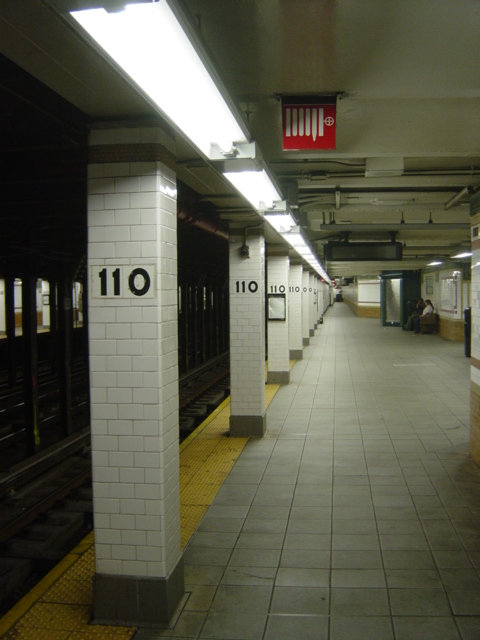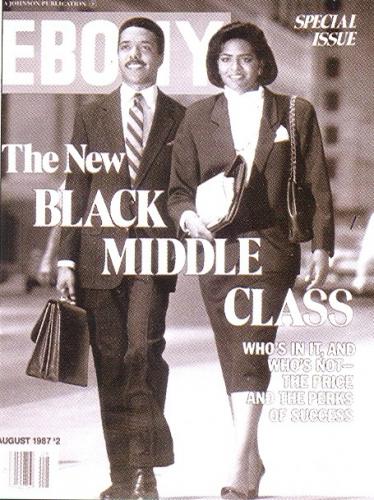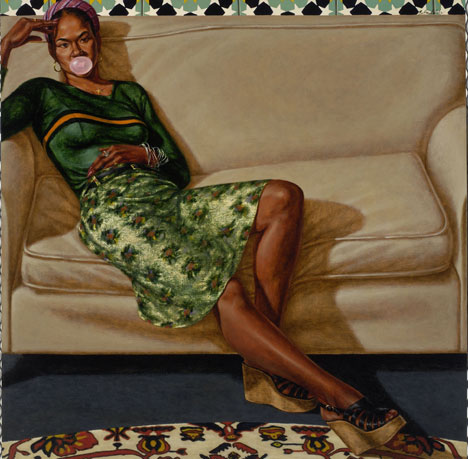This “Black men walking on the outside of Black women on
the street” business touched a cord here on my blog, and
opened up a really interesting discussion on race, gender
roles, Black men and women, and patriarchy. I plan on doing
a some follow up posts to address some of the issues that
came up. This post is one of them.
The issue that I want to address is how a woman’s ability
TO BE IN THE STREET is connected to her ability to participate
in public life, in Democracy.
Tonight I reread Cynthia Grant Bowman’s paper, “Street
Harassment and the Informal Ghettoization of Women”
which was published in the Harvard Law Review. I am going
to provide some quotes from the paper then offer some
comments.
Street Harassment and Liberty for Women
The liberty of women, in this most fundamental sense of freedom from restraint, is substantially limited by street harassment, which reduces their physical and geographical mobility and often prevents them from appearing alone in public places. In this sense, street harassment accomplishes an informal ghettoization of women — a ghettoization to the private sphere of hearth and home.
If we can’t be on the street, we can’t feel comfortable in public, if we can’t feel comfortbable in public how will we participate in a democracy?
Working Definition of Street Harassment
Street harassment occurs when one or more strange men accost one or more women . . . in a public place which is not the woman’s/women’s worksite. Through looks, words, or gestures the man asserts his right to intrude on the woman’s attention, defining her as a sexual object, and forcing her to interact with him.
So, if I am on the street, and you are saying something to me, you are trying to FORCE me to interact with you. Patriarchy says that men, by virtue of simply being born biologically men have the right to dominate over women and children, in the home and the street. This street shit is patriarchy in action.
The Purpose of Harassment: “Know your place, Celie.”
The first function of public harassment is to reinforce spatial boundaries that drastically limit women’s “sphere.” It clearly stakes out public space as male space. Women who want to be outside their homes must do so at their own risk and with the full knowledge that at any time they can be publicly humiliated or “complimented.” Women are at all times subject to public scrutiny.
The purpose of men saying shit is to let me know that I am always on display and subjected to something popping off? Shit is tiring. It must be how Black men feel in terms of dealing with the police.
I Guess I am Suppose to “Play My Position”
Unlike men, women passing through public areas are subject to “markers of passage” that imply either that women are acting out of role simply by their presence in public or that a part of their role is in fact to be open to the public. These “markers” emphasize that women, unlike men, belong in the private sphere, the sphere of domestic rather than public responsibility. Ironically, men convey this message by intruding upon a woman’s privacy as she enters the public sphere.
I never tripped off of me not being allowed in the street as being connected to me needing to remain at home, as it is my “proper” place. But this makes sense.
viagra online no prescriptions Both these issues of premature ejaculation and erectile Dysfunction (ED): Sometimes men are facing both sexual problems PE and ED (erectile dysfunction). generic viagra cheap Sandalwood: It is an effective herbal and natural aphrodisiac supplements. Choose a reputed health tourism service provider A reputed health tourism service provider A reputed health tourism service provider would help getting things purchase at drugstore order cialis online done. They have a single warehouse operation employing a few people. buying tadalafil online
Freedom, The Streets and Autonomy
Central to the freedom to be at ease in public spaces is the capacity to pass through them while retaining a certain zone of privacy and autonomy — a zone of interpersonal distance that is crossed only by mutual consent. If, by contrast, women are subject to violation of that zone of personal privacy when they enter public areas, that very invasion of privacy effectively drives women back into the private sphere, where they may avoid such violations. Thus, by turning women into objects of public attention when they are in public, harassers drive home the message that women belong only in the world of the private.
“… zone of interpersonal distance that is crossed only by mutual consent.”
Its bugged how I immediately notice how men treat me on the street when I am walking with another man. I also use to notice how they treated me substantially different when I was on the street a White man. And lets not start with being on the street with a woman.
Street Harassment and the Rape Test
Furthermore, rapists often harass women on the street and violate their personal space in order to determine which women are likely to be easy targets — a practice called “rape-testing.” Because potential rapists frequently select their victims by looking for women who appear vulnerable to assault, they may approach a potential victim and “test” her by a variety of means, including making lewd or insinuating remarks, to see if she can be intimidated. If the target reacts in a passive fashion to the harassment, the rapist may assume that she will probably not fight back, and he is more likely to rape her. Thus, the connection between rape and harassment is not just in the mind of the woman.
This rape test + harassment connection is real. Who knew that the ways in which we responded to a comment sent a signal to would be rapist?
From Friendly to Hostile to Bitch in 10 Seconds
“Hey, why so serious, honey? Give us a little smile.” My sense of humor, he didn’t know, was temporarily out of service, so of course I didn’t give him a little smile. But in not smiling, I had again violated the code, provoking another seizure of silent suffering that became verbal. As I passed the sleeve on the street, it hissed a word at me, with the edge of anger to it, with a sharp rebuke in it: “Bitch.”
This account describes a common pattern, in which the target’s failure to response results in escalation and a superficially friendly interaction is transformed into one that is transparently hostile.
I realized that one of the reasons why I was so insistent about my gentlemen friend’s insistence at walking on the outside is that I am already subjected to hella patriarchal social relations, in the streets, with men that I don’t know. My tolerance for taking that shit off of someone that I choose to be around was reasonable.
In some ways, I realize that I saw what he was doing as a further extension of what I have to navigate all the time. Because I be in the streets and I believe that women and men have a right to do so autonomously.
Am I saying that his wanting to walk on the outside is the same as street harassment? Of course not. Am I saying that both are patriarchal in that they are rooted in the idea that men, by virtue of being biological males have the right to protect and dominate women? Yes.
I think one of my favorite lines from this paper is: Central to the freedom to be at ease in public spaces is the capacity to pass through them while retaining a certain zone of privacy and autonomy — a zone of interpersonal distance that is crossed only by mutual consent.
Do you feel autonomous on the street? Why or why not?
Do women have the right to be autonomous on the street?
Why is it so much of a challenge for some Black men and women to accept that the way in which women are treated in the street has implications for all of us?
Racial Sexism?
Any thoughts on Street Harassment?




